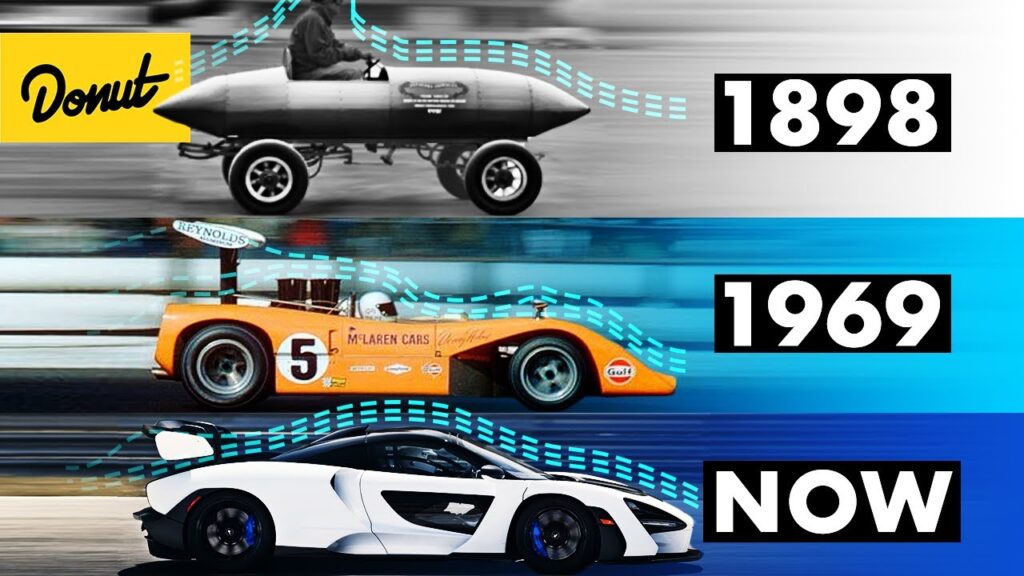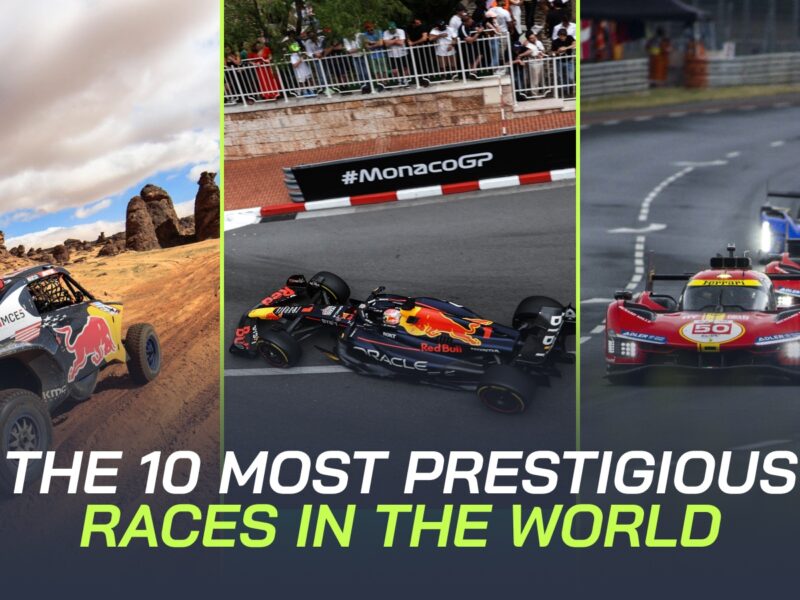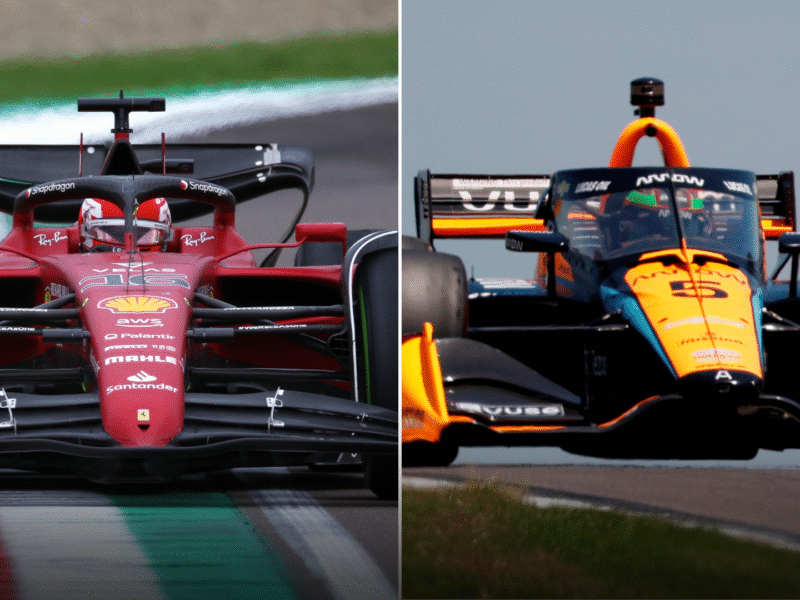The Invisible Hand: Tracing the Evolution of Aerodynamics in Motorsport
Watch any high-level motorsport event – Formula 1, IndyCar, Le Mans prototypes – and you’ll see cars bristling with wings, curves, vents, and complex surfaces. These aren’t just for show; they are the culmination of decades of research into manipulating the air, a relentless pursuit of aerodynamic efficiency that has fundamentally transformed racing.

What began as a simple quest to reduce drag has evolved into a sophisticated science focused on generating enormous amounts of downforce – the key to unlocking incredible cornering speeds. Let’s trace this evolution:
Phase 1: Streamlining and Reducing Drag (The Early Days)
- The Goal: Go faster in a straight line.
- The Concept: Early race car designers recognized that a smooth, rounded shape encountered less air resistance than a blunt one. They focused on “streamlining” – creating teardrop shapes, enclosed wheels (in some categories), and smooth bodywork to minimize drag and maximize top speed. Think of early land speed record cars or the sleek bodies of 1950s Grand Prix machines. Aerodynamics was primarily about cheating the wind.
- The Limitations: While reducing drag helped top speed, it didn’t significantly aid cornering, which is where most lap time is gained or lost on typical circuits.
Phase 2: The Dawn of Downforce – Enter the Wing (1960s)
- The Goal: Increase grip, especially in corners.
- The Concept: The pivotal realization was that an airplane wing generates lift by creating lower pressure above it. By inverting an airfoil shape, designers could create lower pressure underneath the wing, generating negative lift, or downforce. This force pushes the car’s tires harder into the track surface, dramatically increasing grip without significantly adding weight.
- The Pioneers: Visionaries like Jim Hall with his Chaparral sports cars and F1 teams like Lotus, Ferrari, and Brabham began experimenting with wings mounted high on struts in the late 1960s. The effects were immediate and dramatic – cornering speeds skyrocketed.
- The Impact: This was the paradigm shift. Aerodynamics was no longer just about reducing resistance; it was about actively using the air to improve performance. Early wings were often crude and sometimes structurally unsound, leading to rule changes mandating they be fixed securely to the car’s body.
Phase 3: Ground Effect – Sucking the Car to the Track (Late 1970s – Early 1980s)
- The Goal: Generate massive amounts of downforce without the drag penalty of huge wings.
- The Concept: Inspired by the Venturi effect, designers shaped the underside of the car like an inverted wing. Combined with “skirts” running along the sides of the car to seal the edges, this created a powerful low-pressure area underneath, effectively sucking the car onto the track.
- The Pioneers: Lotus, particularly with the Type 78 and the dominant Type 79, mastered ground effect in F1.
- The Impact: Cornering speeds reached previously unthinkable levels. Cars seemed glued to the track. However, it was also dangerous. If the side skirt seal broke (e.g., running over a curb), downforce could be lost instantly, often resulting in massive accidents. This led to ground effect being heavily restricted or banned in many top-level series (like F1) by the early 1980s for safety reasons.
Phase 4: Refinement and Complexity (1980s – 2000s)
- The Goal: Claw back downforce lost from ground effect bans and optimize overall aerodynamic efficiency.
- The Concept: With extreme underbody tunnels banned, focus shifted back to optimizing wings (now complex multi-element designs front and rear) and managing airflow around and over the car body. This era saw the rise of:
- Diffusers: Shaped elements at the rear underside of the car that help accelerate air out from underneath, reducing pressure and creating downforce (a less extreme form of ground effect).
- Bargeboards & Turning Vanes: Complex pieces mounted along the sides of the car to precisely direct airflow towards the rear and away from disruptive areas like the wheels.
- Endplates: Intricate designs on the ends of wings to manage vortices and improve efficiency.
- The Tools: Wind tunnels and, increasingly, Computational Fluid Dynamics (CFD) became essential, allowing designers to visualize and refine airflow with incredible precision.
- The Impact: Cars became incredibly complex visually. An aerodynamic “arms race” took hold, with teams spending fortunes finding tiny incremental gains.
Phase 5: Managing Turbulence and Re-Embracing Ground Effect (2010s – Present)
- The Goal: Improve racing by reducing the negative impact of aerodynamic “wake” or “dirty air” on following cars, while still generating high downforce efficiently.
- The Concept: Previous generations of complex aero created massive turbulence, making it hard for cars to follow closely and overtake. Recent rule changes (especially in F1 starting 2022) aimed to simplify top-surface aerodynamics (wings, bargeboards) and re-emphasize underfloor downforce through carefully regulated tunnels – a return to ground effect principles, but with safety considerations built-in. The aim is to generate downforce in a way that creates less disruptive wake.
- Series Specifics:
- F1: DRS (Drag Reduction System) remains a tool to aid overtaking by opening a rear wing flap on designated straights. The 2022+ regulations are focused on ground effect floors.
- IndyCar: Utilizes different aero packages for ovals (low drag) versus road/street courses (high downforce). Push-to-Pass provides temporary power boosts.
- Sports Cars (WEC/IMSA): Balance of Performance (BoP) regulations often try to equalize aerodynamic potential between different car concepts.
- The Impact: Cars look cleaner on top but have incredibly complex floors. The effectiveness of these changes in improving overtaking is still debated and evolving. Efficiency – generating downforce with minimal drag – remains paramount.
Conclusion: The Never-Ending Quest
The evolution of aerodynamics in motorsport is a testament to relentless innovation. From simple streamlining to complex underbody tunnels and computer-designed wing elements, the quest to master airflow has pushed vehicle performance to incredible heights. It has made cars faster, more physically demanding to drive, and infinitely more complex to design and understand. While rules constantly change to manage speeds, ensure safety, and promote closer racing, the invisible hand of aerodynamics will continue to shape the future of motorsport, driving engineers and designers to find the next breakthrough in their quest for speed.
What era of motorsport aerodynamics do you find most interesting? What future developments do you anticipate? Share your thoughts below!


